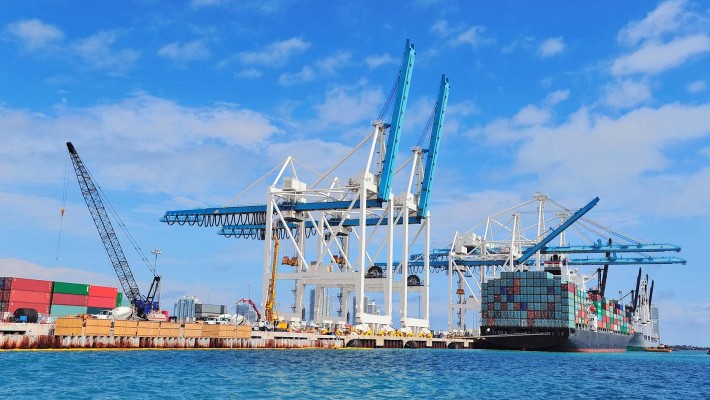Freight Forwarder Insights
Huin International Logistics Latest Articles
International Sea Freight Forwarding Services
nternational sea freight forwarding is a crucial component of global trade, facilitating the transportation of goods across the world's oceans. This mode of transportation is popular due to its cost-effectiveness, capacity to handle large volumes, and suitability for a wide range of goods. This guide will provide detailed information on the steps involved in shipping goods by sea, the different types of sea freight forwarding, and the benefits and challenges of using this mode of transportation.
Steps Involved in Shipping Goods by Sea
- Pre-Shipment Planning:
- Consultation and Quotation: The shipper contacts a freight forwarder to discuss their needs. The forwarder provides a quotation based on the shipment details, including the type of goods, volume, and destination.
- Documentation Preparation: Necessary documents, such as the Bill of Lading, commercial invoice, packing list, and export licenses, are prepared.
- Cargo Insurance: Arranging insurance to cover potential risks during transit.
- Booking Cargo Space:
- The freight forwarder books space with a shipping line that matches the shipper's schedule and budget.
- Cargo Collection and Consolidation:
- Collection: The freight forwarder arranges for the collection of goods from the shipper’s premises.
- Consolidation: If shipping LCL (Less than Container Load), the goods are consolidated with other shipments at a warehouse.
- Customs Clearance (Export):
- The forwarder assists with export customs clearance, ensuring all export duties and taxes are paid.
- Transportation to Port:
- The cargo is transported to the port of departure, where it is loaded onto the ship.
- Sea Transport:
- The goods are shipped across the ocean to the destination port.
- Customs Clearance (Import):
- The forwarder handles import customs clearance at the destination port, ensuring all import duties and taxes are paid.
- Cargo Deconsolidation and Delivery:
- Deconsolidation: For LCL shipments, the cargo is deconsolidated at a warehouse.
- Final Delivery: The goods are transported to the final destination.
Types of Sea Freight Forwarding
- Full Container Load (FCL):
- The shipper rents an entire container exclusively for their goods.
- Suitable for large shipments.
- Less than Container Load (LCL):
- The shipper’s goods share container space with other shippers’ goods.
- Cost-effective for smaller shipments.
- Roll-On/Roll-Off (Ro-Ro):
- Used for wheeled cargo, such as cars, trucks, and trailers.
- Vehicles are driven onto the ship and off at the destination port.
- Bulk Shipping:
- Used for large quantities of loose goods, such as grains, coal, and oil.
- Goods are loaded directly into the ship’s hold.
Benefits of Sea Freight Forwarding
- Cost-Effective:
- Economical for transporting large volumes of goods over long distances.
- Lower costs per unit compared to air freight.
- Capacity:
- Able to handle very large and heavy shipments.
- Suitable for a wide range of goods, including raw materials, machinery, and consumer goods.
- Global Reach:
- Extensive network of shipping routes and ports worldwide.
- Facilitates international trade and access to global markets.
- Environmental Impact:
- Lower carbon footprint per ton-kilometer compared to air freight.
Challenges of Sea Freight Forwarding
- Transit Time:
- Slower compared to air freight, with longer lead times.
- Potential delays due to weather conditions, port congestion, and other factors.
- Complexity:
- Involves multiple stages and parties, requiring careful coordination.
- Extensive documentation and compliance with international regulations.
- Risk of Damage or Loss:
- Goods are exposed to various risks, including rough handling, piracy, and natural disasters.
- Insurance is essential to mitigate financial losses.
- Port and Customs Delays:
- Delays at ports and customs can affect delivery schedules.
- Efficient handling and clearance processes are crucial to minimize disruptions.
Conclusion
International sea freight forwarding plays a vital role in global trade, offering a cost-effective and efficient solution for transporting goods over long distances. By understanding the steps involved, the types of services available, and the associated benefits and challenges, businesses can make informed decisions to optimize their supply chain and enhance their global operations.
